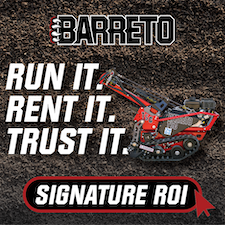Service Tips: Small engine maintenance
Seven maintenance tips to reduce small engine headaches.
By Tom Billigen
If there’s one thing you can count on, it is maintenance. Unavoidable but necessary, preventive and routine maintenance is key to keeping operations running, mitigating equipment failure and limiting downtime on the job.
Maintenance can also be a hassle — not unlike any routine task — but, thanks to industry advances in engines and engine design, it doesn’t have to be.
In response to customer feedback, many manufacturers are turning their focus to developing and designing features that reduce maintenance and the associated downtime. These innovations help improve productivity while decreasing the amount of time equipment spends in the shop.
Regular and preventive measures are essential to a solid maintenance schedule. Here are the top seven maintenance best practices sure to keep your engine in peak-performance condition.
Change the oil
It may sound simple, but regular oil changes are crucial to engine performance. Skipping oil changes may lead to significant engine damage. Relying on oil past its service life means relying on oil with decreased viscosity and a diminished ability to correctly clean, cool and lubricate your engine, all of which may lead to lower engine performance capabilities and lasting damage.
The industry is starting to see advanced oil management systems and improved oils that extend oil change intervals. For example, Vanguard’s Oil Guard oil innovation increases oil change intervals to 500 hours, allowing most operators to go an entire season without stopping for an oil change.
Despite these advances, it’s still important to know and understand the guidelines for your fleet’s specific engines. Changing oil too often can waste resources, while waiting too long can lead to engine damage. Knowing your engine’s oil change intervals and adhering to that schedule ensures your fleet can run like a well-oiled machine.
Choose fuel wisely
The fuel you put in your tank can make all the difference when it comes to engine performance. For decades, fuel choices were limited to regular, unleaded and diesel. Now, ethanol fuel blends are also an option.
Lower-level ethanol, typically 10 percent or less, is safe to use in most engines. Ethanol-free gasoline with an octane rating of 87 or higher is generally a good fuel choice. Choose a fuel that is optimized for your engine to ensure performance and avoid engine issues, such as misfires and long-term damage.
Some manufacturers are also integrating technology that prevents fuel-associated engine issues. Vanguard developed its Transport Guard technology, a single fuel-ignition shut-off switch that eliminates oil/fuel dilution during transport. Look for these types of innovative features to ensure whatever fuel you choose stays undiluted.
Consider propane
While gas is the standard choice, fueling with propane can offer benefits and advantages for your operation in some instances.
Propane can help eliminate operator error in environments where that can be a significant problem. For example, if you’re working on a golf course, gas spillage can cause dead or brown spots. With propane, spillage is never an issue. Using propane can also help avoid fuel storage issues because propane-powered equipment can be stored for long periods of time and isn’t susceptible to going stale.
Using propane can impact your maintenance schedule by reducing the amount of time a crew spends refueling. If your crew of four stops at a gas station for 15 minutes, that’s a combined hour of lost productivity. With propane, refueling can be easily done on the job.
Smart storage
Eventually, you’re going to need to store your equipment. But what happens to equipment that sits idle for too long? Stale fuel. Once fuel is added to an engine tank, it starts to lose volatility. To mitigate issues associated with stale fuel, such as diminished performance and vapor lock, fill your tank with fresh gasoline after removing equipment from storage.
If you know equipment will be stored for significant periods, use a fuel stabilizer to combat stale fuel. Often, fuel stabilizers help prevent gum and varnish build-up and can combat corrosion associated with ethanol fuels and chemical breakdowns.
Give it fresh air
Fresh air is one of the key performance components in small, air-cooled engines, which means regularly changing the air filter is critical. Generally, air filters should be changed every 100 to 250 hours, depending on the application and filter type.
With advancing technologies, such as cyclonic air filtration, it’s important to choose OEM filters designed specifically for that engine to guarantee fit and performance. Often, these filters have a longer lifespan and will ensure better engine productivity.
Replace spark plugs
Over time, spark plugs can be susceptible to carbon deposits and other types of performance-inhibiting damage. Worn spark plugs can lead to engine misfires, stalling and difficult starting. Regularly removing and inspecting the spark plug and replacing when necessary can help avoid starting issues.
Review your fleet
At the beginning and end of each season, take stock of your equipment fleet and their engines. Are the engines older, no longer performing efficiently or experiencing frequent issues? Can these performance issues be improved with proper maintenance practices or are they related to old age? If so, it may be time to repower.
As advanced technology and innovations continue to improve the industry, engine maintenance needs are being reduced and simplified. However, performing proper maintenance will always be an integral component of ensuring your fleet is primed for productivity.
Understanding your engine’s maintenance needs and sticking to a maintenance schedule is key to keeping your fleet up and running.
Tom Billigen is customer education training manager at Briggs & Stratton.










